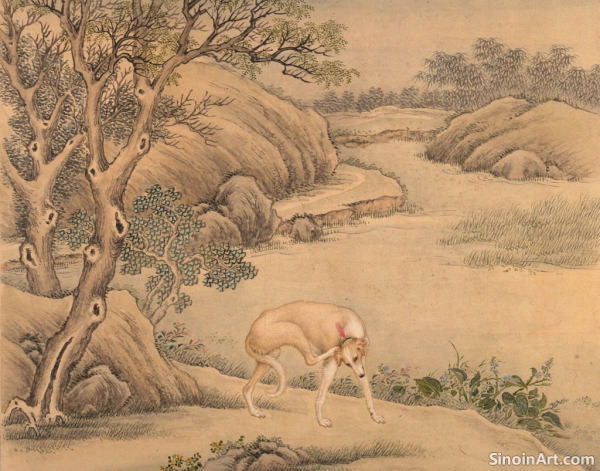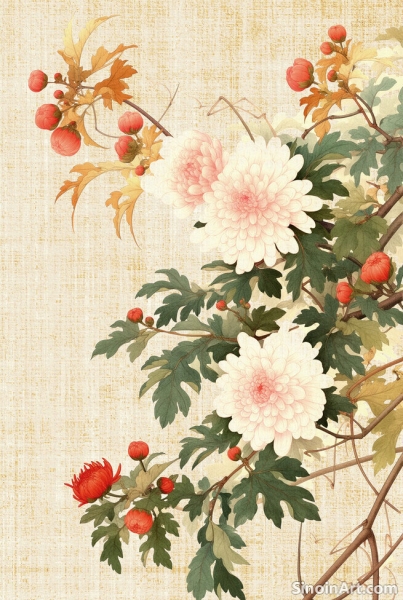Symbolism in Gongbi Painting: Reading the Language of Detail
|
Gongbi painting is not only a visual art but also a rich tapestry of symbolic meanings, where the careful selection and rendering of subjects, colors, and compositional elements serve to convey specific messages and cultural values. The meticulous detail, characteristic of the style, enhances the symbolic weight of each object, transforming a seemingly realistic depiction into a complex visual language. This symbolic richness adds layers of meaning to the artistry of Gongbi painting.  Flowers and plants, often depicted with meticulous detail in Gongbi paintings, are imbued with symbolic meanings. For instance, the peony often symbolizes wealth and prosperity, while the plum blossom represents resilience and the beauty of winter. The careful choice and rendering of these elements often reflect the artist’s intent and add layers of meaning to the artwork. The symbolic language is just as important as the aesthetic aspect of the work.  Animals and birds also play a significant symbolic role in Gongbi painting. Cranes, often associated with longevity and wisdom, are frequently depicted in pairs, signifying harmony and marital bliss. The peacock, with its vibrant display of plumage, is a symbol of beauty, dignity, and good fortune. These animals become more than mere depictions, taking on a deeper symbolic resonance within the work.  Color plays a crucial role in conveying symbolic meanings within the Gongbi tradition. Red, for example, often signifies joy, celebration, and good fortune, while yellow is associated with imperial authority and power. White, often used to depict purity and transcendence, is carefully employed to emphasize the ethereal or spiritual qualities of certain subjects. Color, therefore, is a powerful and intentional choice in the artist's expression. The careful attention to detail, precise use of color, and intentional selection of symbolic elements make Gongbi painting a rich visual language that conveys both aesthetic beauty and cultural meaning. The ability to decode these symbols provides a deeper appreciation for the complexity and richness of this artistic tradition, revealing the powerful interplay between technical mastery and symbolic expression that underlies every work. The symbolic depth of these works is integral to understanding their lasting appeal. |
Tag : Symbolism in Gongbi, Gongbi Art Symbols, Chinese Symbolic Painting, Meaning in Gongbi, Detailed Symbolic Art
Related information
- The Challenge of Large-Scale Gongbi Painting
- The Conservation and Care of Gongbi Paintings
- Brushstrokes of Precision: The Techniques of Gongbi
- The Delicate World of Gongbi: An Introduction
- Gongbi and the Depiction of Architecture
This article explores the unique challenges of creating large-scale Gongbi paintings, including maintaining precision, acquiring specialized materials, managing composition, and the time-consuming process of layering colors and details.
This article provides essential information on the conservation and care of Gongbi paintings, including controlling the environment, proper storage, framing techniques, cleaning recommendations, and the importance of regular inspections to ensure the longevity of these delicate artworks.
This article delves into the specific techniques of Gongbi painting, focusing on the outlining method, color application, detailed depiction, traditional materials, and the discipline required for mastery.
This article introduces Gongbi painting as a precise and detailed art form within Chinese traditional art, highlighting its techniques, historical themes, materials, and contemporary relevance.
This article explores the depiction of architecture in Gongbi painting, highlighting the meticulous detail, historical accuracy, use of perspective, and interplay of light and shadow, showcasing how this art form captures both the physical appearance and cultural significance of buildings.